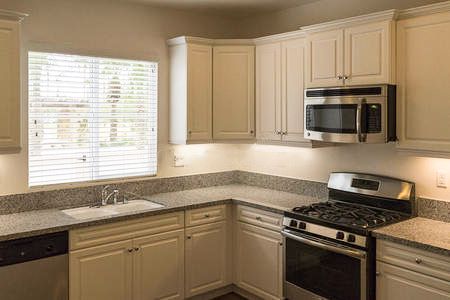The kitchen, as the center of culinary production in the home, not only emits delicious aromas but also potentially harmful gases that can have an impact on human health and indoor air quality. To ensure a healthy and safe living environment, the introduction of kitchen gas detectors has become an indispensable measure. Designed to detect potentially harmful gases such as Methane (CH4), Propane (C3H8) and Carbon Monoxide (CO), Gas Dog gas monitor alarms are an early warning system to prevent gas leakage and build-up. By continuously monitoring indoor air, gas detectors can alert residents to the concentration of harmful gases in the kitchen, preventing potential fire hazards and health risks.
Why Need Gas Monitoring in the Kitchen?
Safety: The kitchen is one of the more potentially hazardous areas of the home because of the harmful gases produced during the cooking process, such as Methane (CH4), Propane (C3H8), and Carbon Monoxide (CO). These gases, if leaked or accumulated in excess, can lead to serious accidents such as fire, explosion or poisoning. Gas detectors can monitor the concentration of these gases and will sound an alarm once the concentration is abnormal, reminding people to take timely measures to ensure the safety of family members.
Fire Prevention: In the kitchen, the high temperature, open flame and grease during the cooking process can easily lead to fire. The gas detector can monitor smoke and gas leakage, and once abnormalities are detected, an alarm will be issued in time, helping to prevent fires or take prompt measures to extinguish the source of fire.

Harmful Gases in the Kitchen
Harmful and dangerous gases commonly found in kitchens include Carbon Monoxide (CO), Volatile Organic Compounds (VOCs), Methane (CH4), Propane (C3H8), and other toxic gases. These gases can come from incomplete combustion, cleaning agents, high-temperature cooking processes for food, etc. They can affect air quality and hurt respiratory health and the indoor environment.
| Gas | Source in Kitchen | Characteristics | Health Hazards |
| Methane (CH4) | Natural gas is used in stoves and ovens | Colorless, odorless (smell added artificially) | Highly flammable; explosion risk |
| Propane (C3H8) | LPG in gas cylinders or portable stoves | Heavier than air, accumulates low | Asphyxiation, explosion hazard |
| Butane (C4H10) | Lighters, portable cooking fuels | Colorless gas, heavier than air | Headaches, dizziness, fire/explosion risk |
| Carbon Monoxide (CO) | Incomplete combustion from stoves or heaters | Colorless, odorless, tasteless | Fatal at high levels; causes headache, nausea |
| Nitrogen Dioxide (NO2) | Gas ovens, burners, and poor ventilation | Reddish-brown gas, sharp odor | Lung irritation aggravates asthma |
| Hydrogen Sulfide (H2S) | Rare leaks, drains, or sewage nearby | Rotten egg smell, heavier than air | Eye irritation, dizziness, and high levels are deadly |
Gas Monitor Alarm for Your Kitchen
A gas alarm is like a smoke alarm—but for gas leaks. It continuously monitors the air in your kitchen (or wherever it’s installed) for the presence of combustible gases like methane, propane, and butane. When it detects a leak, it alerts you immediately with a loud alarm, flashing lights, or even smartphone notifications, depending on the model.
The benefits of installing a gas leak detector include:
- Early warning of gas leaks
- Increased home safety and peace of mind
- Reduced risk of fires or explosions
- Protection for your family, pets, and neighbors
Among the many gas detectors available on the market today, the Gas Dog home gas alarms stand out for its balance of affordability, functionality, and user-friendliness. It’s been growing in popularity among homeowners, landlords, and even RV enthusiasts—and for good reason.
GasDog Home Gas Detectors & Alarms
- Kitchen Use: GasDog home gas leak monitor alarms can detect Methane (CH4), LPG, Carbon Monoxide (CO), Liquefied Petroleum Gas (LPG), and household gases, perfect for kitchens near stoves or heaters, with high sensitivity to small leaks.
- Digital Display& Audible Alerts: It features a clear LED screen showing real-time gas levels in PPM, turning red and sounding an 85 dB+ alarm when dangerous.
- Smart Connectivity: Some gas alarm models connect to WiFi, sending app alerts so you can monitor gas safety remotely.
In conclusion, gas detection in the kitchen is not just a precaution—it's a vital layer of protection for your home and loved ones. Combustible and toxic gases like methane, propane, and carbon monoxide can pose serious risks, often without warning. By installing a reliable gas detector like the GasDog home gas detector, you take a proactive step toward preventing accidents before they happen. Its real-time monitoring, clear alerts, and user-friendly design make it an essential safety upgrade for any kitchen. Don’t wait for a leak to remind you—act today and make gas safety a part of your everyday life.
